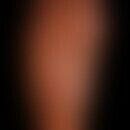Synonym(s)
HistoryThis section has been translated automatically.
Juliusberg, 1899
DefinitionThis section has been translated automatically.
Erythematosquamous, acute or chronic, self-limiting skin disease of unexplained etiology and pathogenesis, which was classified in the group of parapsoriasis diseases, i.e. psoriasis-like diseases, by the work of Brocq (1902). (Note: this classification can no longer be maintained.) The different clinical manifestations of pityriasis lichenoides are considered to be variants of the same clinical picture with different acuity.
You might also be interested in
ClassificationThis section has been translated automatically.
Clinically, an acute and a chronic form are distinguished. Furthermore, there are variants whose nosological assignment is questionable so far. Pityriasis lichenoides chronica can either arise from the acute variant or develop de novo.
Other forms:
- Pityriasis lichenoides et varioliformis acuta with vasculitis (with evidence of leukocytoclastic vasculitis).
- Pseudolymphomatous pityriasis lichenoides et varioliformis acuta (with clinical relationship to lymphomatoid papulosis).
Occurrence/EpidemiologyThis section has been translated automatically.
S.under the respective variants
ManifestationThis section has been translated automatically.
Both forms of the disease have a peak of manifestation both in childhood (2-7 years) and in adulthood (mttler age around 40 years).
TablesThis section has been translated automatically.
DD of Pityriasis lichenoides
Clinical picture |
Clinical criteria |
Diagnostics |
|
PLEVA |
Arthropod reaction |
Irregularly distributed urticarial papules; severe itching; acute, usually overnight |
Histology |
Varicella |
Diseases in contact persons; polymorphous exanthema (starry sky); oral mucosa and capillitium may be affected |
VZV-IgM |
|
small vessel vasculitis |
Acute onset, usually after infection; always hemorrhagic exanthema; little scaling; no blisters |
Diagnostic histology, immunohistology |
|
Gianotti-Crosti syndrome |
Acral localized papules |
Histology if necessary |
|
Lymphomatoids Papulose |
Usually only isolated papules; no vesicles; largely asymptomatic course; occurs predominantly in adults |
Typical histology (CD30-positive T-cell pattern) |
|
| |||
PLC |
Psoriasis vulgaris (guttata type) |
Uniform exanthema; psoriasis phenomena are triggerable; family history |
Exclusion of infection |
Parapsoriasis en plaques, small heart type |
Quiet, less symptomatic clinical picture; no scaling; cigarette-paper wrinkling of the skin (pseudoatrophy) |
Histology |
|
pityriasis rosea |
Uniform exanthema; primary medallion; duration only 6-8 weeks |
Exclusion of microspores |
|
urticaria pigmentosa |
Disseminated appearance; no scaling; Darier sign is positive; itching in warm showers |
Histology is diagnostic |
|
lichen planus |
small papular exanthema; distinct itching; waxy shiny papules; flexural accentuation |
Histology is diagnostic |
|
Syphilis |
Rather discreet exanthema; no itching; palms and soles of the feet may be affected |
Syphilisserology is positive |
|
Note(s)This section has been translated automatically.
The term "parapsoriasis", introduced by Brocq in 1902, referred to diseases clinically similar to psoriasis, including pityriasis lichenoides (parapsoriasis guttata) (see also remarks on"erythrosquamous edema").
The term "parapsoriasis" (parapsoriasis en petites plaques; parapsoriasis en grandes plaques; parapsoriasis variegata) is still used today to refer to clinical pictures which, despite their psoriasis-like clinic, are to be assigned to cutaneous T-cell lymphomas. The term "parapsoriasis", as a superordinate generic term, has today only a historical meaning.
LiteratureThis section has been translated automatically.
- Brocq LAJ (1902) Les parapsoriasis. Ann Dermatol Syph (Paris) 3: 313-315, 433-468
- Koh WL et al (2013) Pityriasis lichenoides in an Asian population. Int J Dermatol 52:1495-1499
- Park JM et al (2013) Is narrowband ultraviolet B monotherapy effective in the treatment of pityriasis lichenoides? Int J Dermatol 52:1013-1018
Incoming links (8)
Erythrosquamous diseases; Gluten-Related Dermatological Disorders; Guttate parapsoriasis; Parapsoriasis en gouttes; Parapsoriasis (overview); Paraviral exanthema; Syphilide papular; Tuberculosis cutis miliaris disseminata;Outgoing links (6)
Erythrosquamous diseases; Lymphomatoids papulose; Parapsoriasis (overview); Pityriasis lichenoides chronica; Pityriasis lichenoides (et varioliformis) acuta; Vasculitis leukocytoclastic (non-iga-associated);Disclaimer
Please ask your physician for a reliable diagnosis. This website is only meant as a reference.







